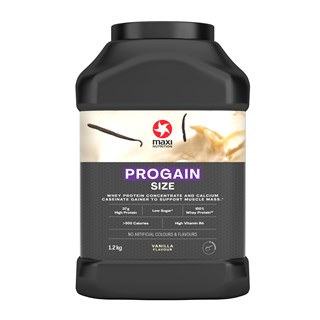What Does ‘Bulking’ Mean?
To help us better understand the finer points of bulking, we have enlist the help of Maximuscle Ambassador Sean Lerwill. With years of experience within the fitness industry Sean has a wealth of knowledge and shares his views and opinions on the best way to bulk for the Ibiza Challenge.
The fitness industry has changed a great deal in the last 5-6 years. Huge credit for this goes to the use of social media to supply and spread fitness knowledge and methods. This has lead to what were once very niche terms like “cut”, “off season” or “bulking” from the bodybuilding arena becoming synonymous with your average gym goer who is looking to get in shape for the summer holiday or just for their life in general.
A few years ago, physique modelling competitions like the IFBB or UKBFF were only run a few times a year. These days a huge number of federations and promotions have arisen, meaning competitions are running nationally and internationally almost every week. This supply has only been able to occur due to the demand of those wanting to compete. These days you can walk into any gym and you’ll find at least one person training for a competition and in their “bulking” phase. A few years ago, this would have been confined to a few specialist bodybuilding gyms only.
So what exactly is “bulking”? If you aren’t aware, to build muscle you need to provide your body with excess calories. Everything in life is about energy. To add weight (be that fat or muscle) to your body you must supply the body with more energy (as calories from food) than it needs. We all need different amounts of calories. You can roughly work out your needs as they are dependent on you age, weight, height and activity; which is dependent on your job and how much you train. As long as you ingest more calories than you need, to maintain weight or referred to as maintenance calories, you’ll be in an energy surplus needed to gain weight.
Someone who is bulking is purposely eating more calories than they need. By providing your muscles with a strong stimulus to grow from progressive, intense training, these excess calories, especially protein, should aid to muscle hypertrophy and gains. However, if you just eat a calorie surplus without the necessary resistance training for muscle growth the excess calories will just add body fat.
Many bodybuilders and physique competitors still speak about “bulking” on their “off season”. This is the time of year where they aren’t competing, so do not need to be lean with a six pack. They therefore purposely eat more calories than they need and train their muscles hard with the aim of forcing the muscles to grow. For the most part they also gain a fair bit of body fat compared to when on stage. They look far more bulky and are hence bulking.
Bulking can be done in one of two ways:
- Clean Bulk
- Dirty Bulk
1. A clean bulk refers to adding excess calories (for the reasons explained above), but doing so with largely healthy foods. The types of foods eaten when clean bulking aren’t that dissimilar to foods eaten when cutting or trying to maintain and stay lean. Treat meals (the addition of a meal or two a week with more unhealthy foods) will still be used in many cases, but 90% of meals will be nutrient and calorie while meeting the calorie surplus requirements for bulking. A clean bulk usually leads to a leaner bulk and is certainly more healthy, to the body and mind, long term.
2.A dirty bulk refers to adding excess calories as described above but with any and all foods. Often it is seen as an excuse to eat all the foods avoided during a cut or when staying lean. Therefore cakes, chocolates, ice cream and alcohol among others are often overdone. Foods that are calorie dense but are often low in nutrients. This could have health implications and not something that is typically advocated.. The psychology of eating such foods after cutting them out for so long can also be detrimental when bulking like this and it has been linked with eating disorders. Especially as the subsequent cut can often be far harder as a dirty bulk usually leads to a less lean end point as well as a change of palate that must then be changed again!
There may be different methods, but the bottom line is that bulking is a term used to describe a state of training and eating with the aim of increasing muscle mass. Bulking relies upon eating more calories than the body needs for a set amount of time before dieting/cutting calories to then lose any excess body fat gained, while maintaining the muscle. It’s history may be in the bodybuilding arena, but thanks to the wide availability and prevalence of physique competitions it has filtered into even the most mainstream highstreet gym or swanky health club.
For a basic guide on how to work out your bulk check out this bulking calories article.
BACK TO THE BULKING ZONE













